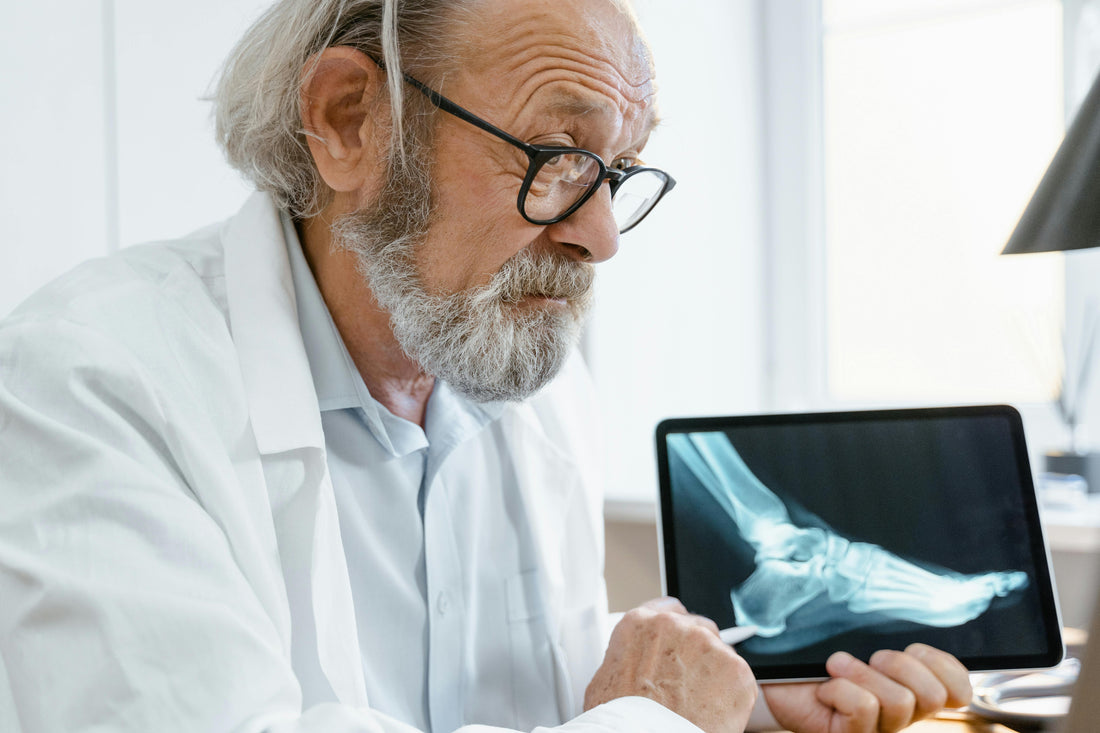
Understanding Bone Health After Menopause
Share
After menopause, many women face a silent threat to their health: weakening bones. This condition, called osteoporosis, increases the risk of fractures, especially in the spine, hips, and legs. But there’s good news—simple lifestyle changes, like the right kind of exercise, can make a big difference.
One powerful option? Resistance training.
What Is Resistance Training?
Resistance training means any form of exercise where your muscles work against a force. This can include:
- Lifting weights
- Using resistance bands
- Doing bodyweight exercises like squats or push-ups
The goal is to strengthen muscles, but as studies now show, it also helps improve bone strength—especially in postmenopausal women.
Why Resistance Training Matters for Bone Health
As women age and estrogen levels drop after menopause, bone loss speeds up. This can lead to fragile bones that break easily. Medications exist, but they may have side effects or may not work for everyone.
That’s where resistance training steps in. It helps bones adapt by making them stronger. When muscles pull on bones during exercise, the body responds by building denser, tougher bones.
What the Latest Research Shows
A recent study analyzed data from 17 clinical trials involving 690 postmenopausal women. The researchers looked at how different resistance training programs affected bone mineral density (BMD) in key areas: the spine, hip, and femur (thigh bone).
The results were clear:
- Resistance training significantly improved bone density in the lumbar spine, femoral neck, and total hip
- No clear benefit was seen in the greater trochanter (a part of the upper femur), possibly because this area needs more targeted impact
The Best Resistance Training Plan for Strong Bones
Not all exercise plans are equally effective. Based on the research, here’s what works best for improving bone health in postmenopausal women:
1. Train at least three times per week
Women who did resistance training three times a week had better bone results than those training less often.
2. Use high intensity
High intensity means lifting heavier weights (around 70% of the heaviest weight you can lift once, also known as your 1-rep max or 1RM). This type of training was most effective for improving bone density, especially in the hip and femur.
3. Stick with it for at least 6 to 12 months
Bone changes take time. Programs lasting 48 weeks or longer had the best results, particularly in the hip and femur.
4. Exercise sessions should be at least 40 minutes long
Longer sessions had better outcomes, especially for spinal bone health.
A Sample Weekly Resistance Training Plan
Here’s an example of what a simple and effective weekly plan might look like:
- Day 1: Squats, lunges, deadlifts (2–3 sets of 8–10 reps)
- Day 2: Rest or light walking
- Day 3: Push-ups, resistance band rows, overhead press (2–3 sets of 8–10 reps)
- Day 4: Rest or light yoga
- Day 5: Step-ups, glute bridges, calf raises (2–3 sets of 8–10 reps)
- Day 6–7: Active recovery or complete rest
Make sure to warm up before and stretch after each session. As always, check with your doctor or a certified trainer before starting a new fitness routine—especially if you have existing bone or joint problems.
Final Thoughts
Bone health isn’t just about medication. With consistent effort, the right resistance training program can slow down or even reverse bone loss in postmenopausal women. Start small, be consistent, and build strength—not just in your muscles, but in your bones too.
